Rhus copallinum – Winged Sumac

The Winged Sumac (Rhus copallinum) is a native plant with edible fruits. The winged sumac is in the same family as cashews, poison ivy, mangoes, and pistachios. Winged sumac has compound leaves which turn red in the fall. Fruit clusters can persist throughout the winter. All berries of red sumacs are edible. The berries produce […]
Malus spp. – Wild Apples
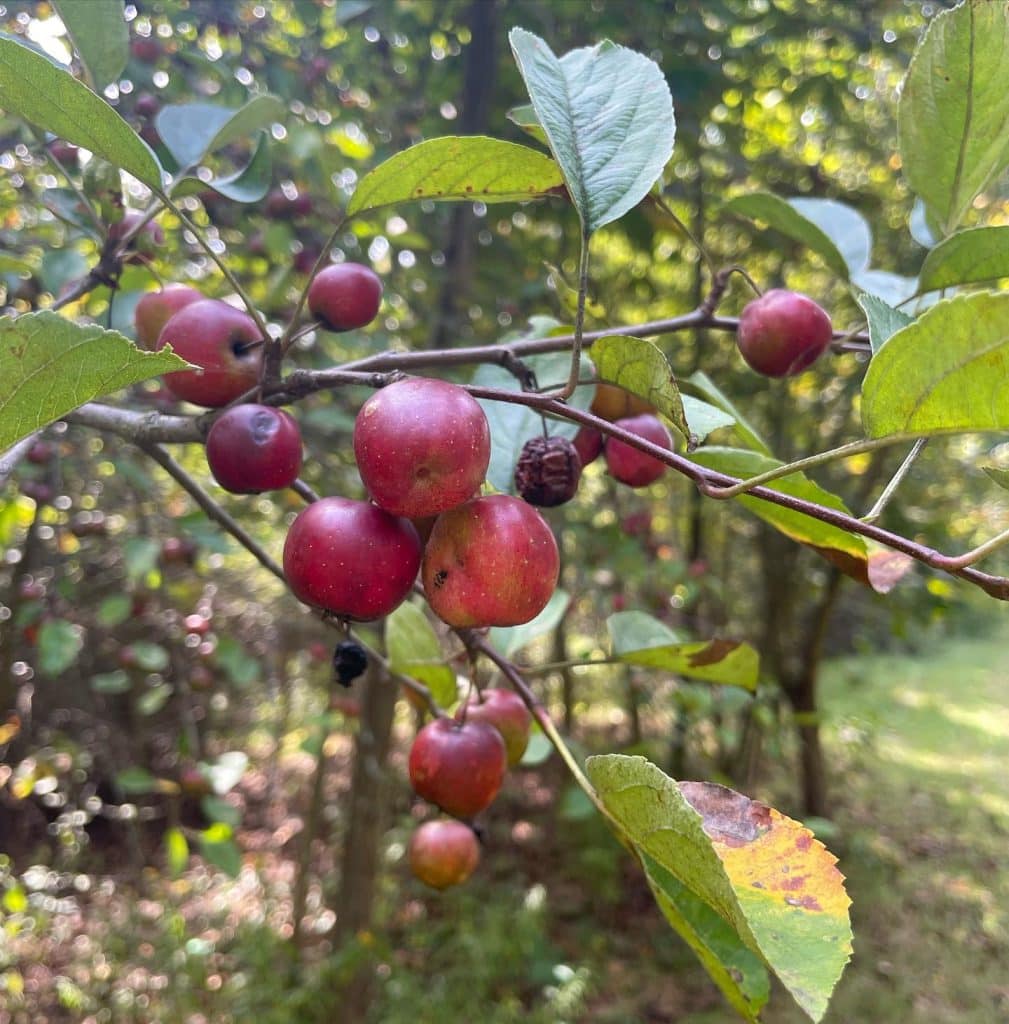
Wild Apples (Malus spp.) are apple trees that grew from seed. The apples are considered crab apples if the fruit is less than 2 inches in diameter. There are over 40 species of crab apples across the world and 4 species that are native to the United States. Two of these species can be found […]
Sambucus canadensis – Elderberries
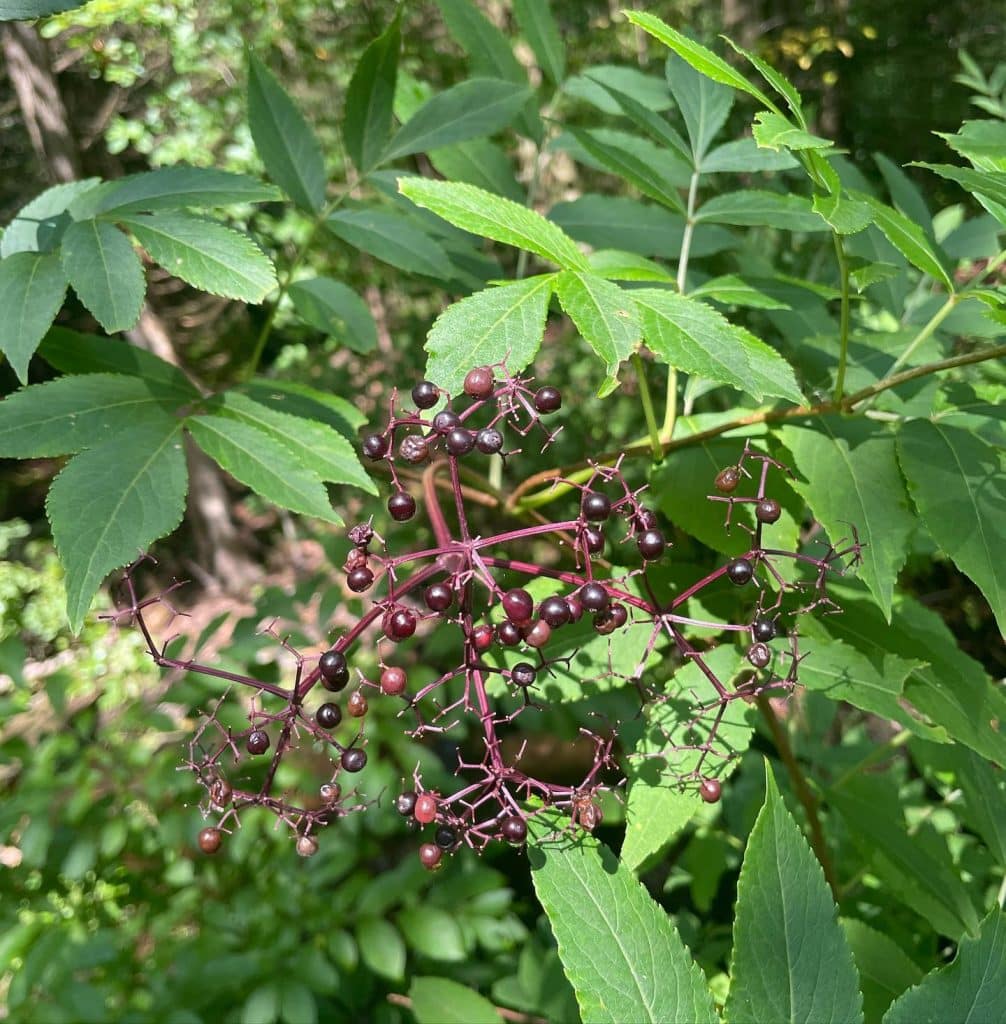
Elderberries (Sambucus canadensis) are a native woody shrub that like to grow near water. Elderberries hang down in a cluster at the end of the branch. The leaves grow in 5-11 leaflets that are opposite and serrated. Elderberry leaves and stems are toxic. Berries should be cooked, and seeds removed to avoid stomach upset. Elderberry […]
Lindera benzoin – Spicebush
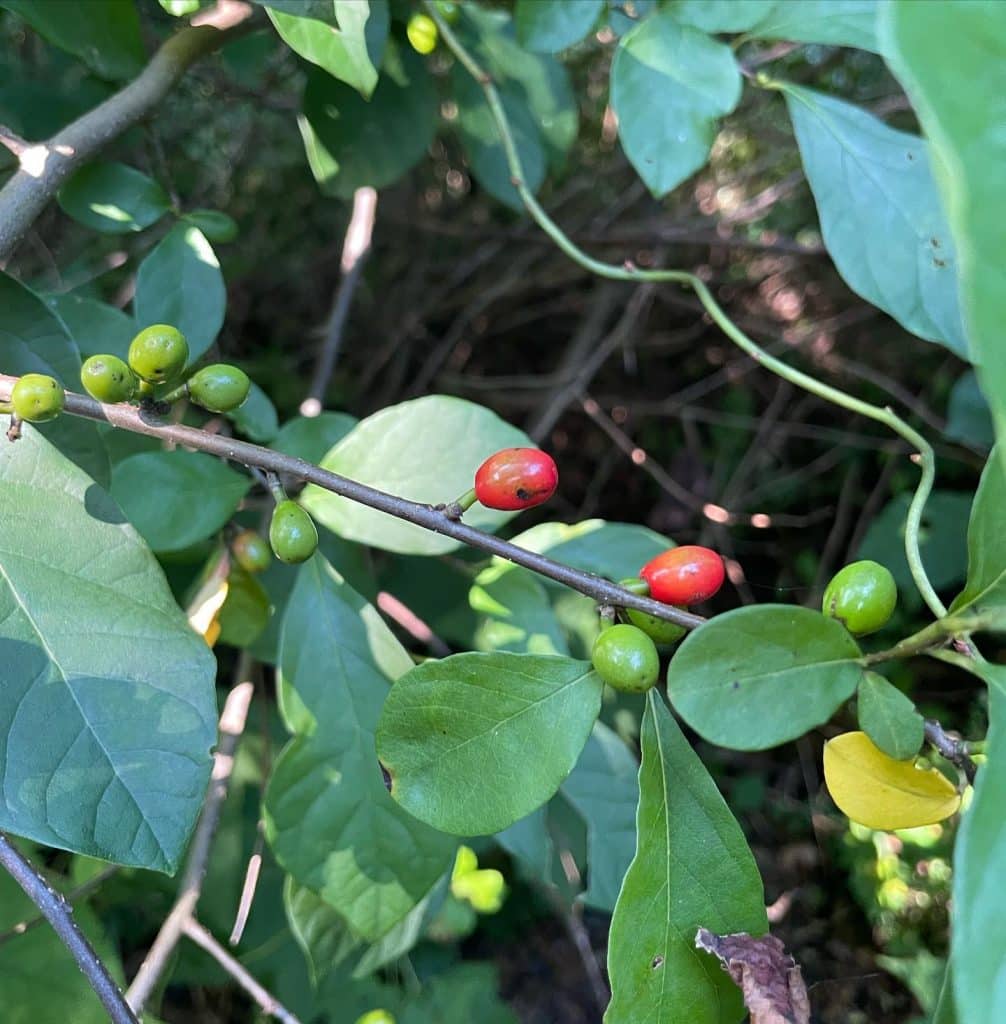
Spicebush (Lindera benzoin) is a native deciduous shrub that can be found in moist areas. Spicebush can be identified by its alternative, glossy leaves with smooth margins. The female plants produce glossy, red berries in early fall. The berries have a large seed inside. The shrub can grow up to 15 feet tall. Fruits and […]
Hibiscus syriacus – Rose of Sharon
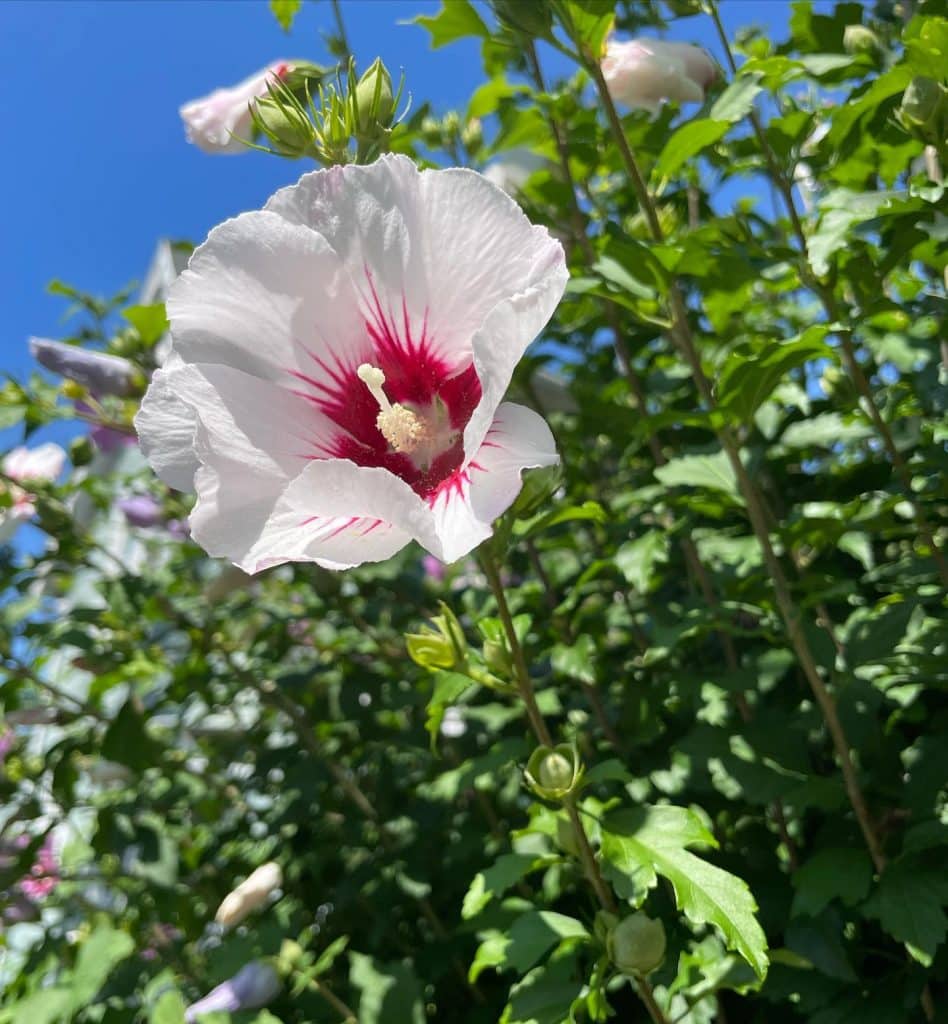
Rose of Sharon (Hibiscus syriacus) is an edible type of hibiscus that is native to Asia, but commonly planted in the United States. Rose of Sharon can be identified by its tropical-looking flowers and different shaped, asymmetrical leaves. The entire Rose of Sharon plant is edible. Leaves can be enjoyed spring-fall. The leaves taste similar […]
Erechtites hieraciifolius – American burnweed
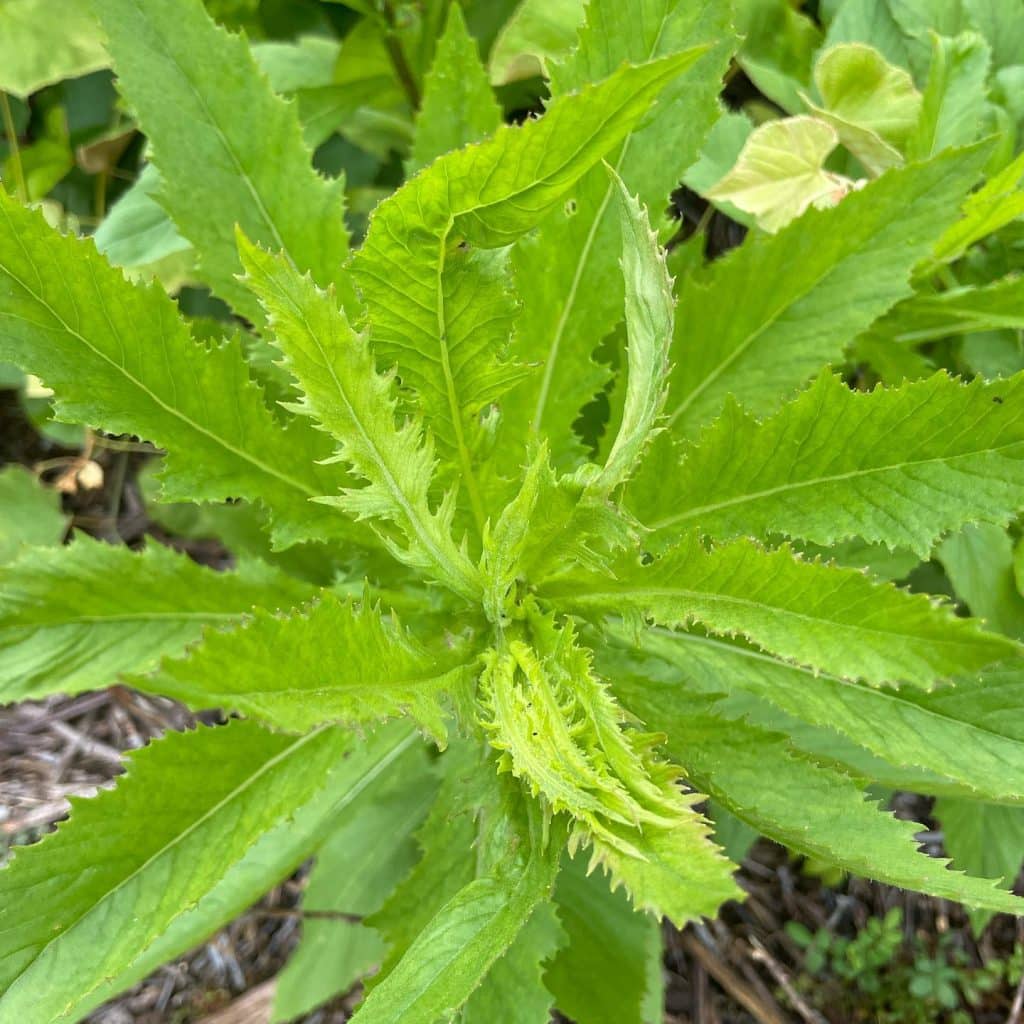
American Burnweed (Erechtites hieraciifolius) is a native plant in the Daisy (Asteraceae) family. It is often one of the earliest pioneer species of areas that were recently burned. It also grows well in disturbed habitats. American burnweed has alternate, serrated leaves that are aromatic when crushed. It produces yellow or pink flower heads in the […]
Prunus serotina – Wild Black Cherries
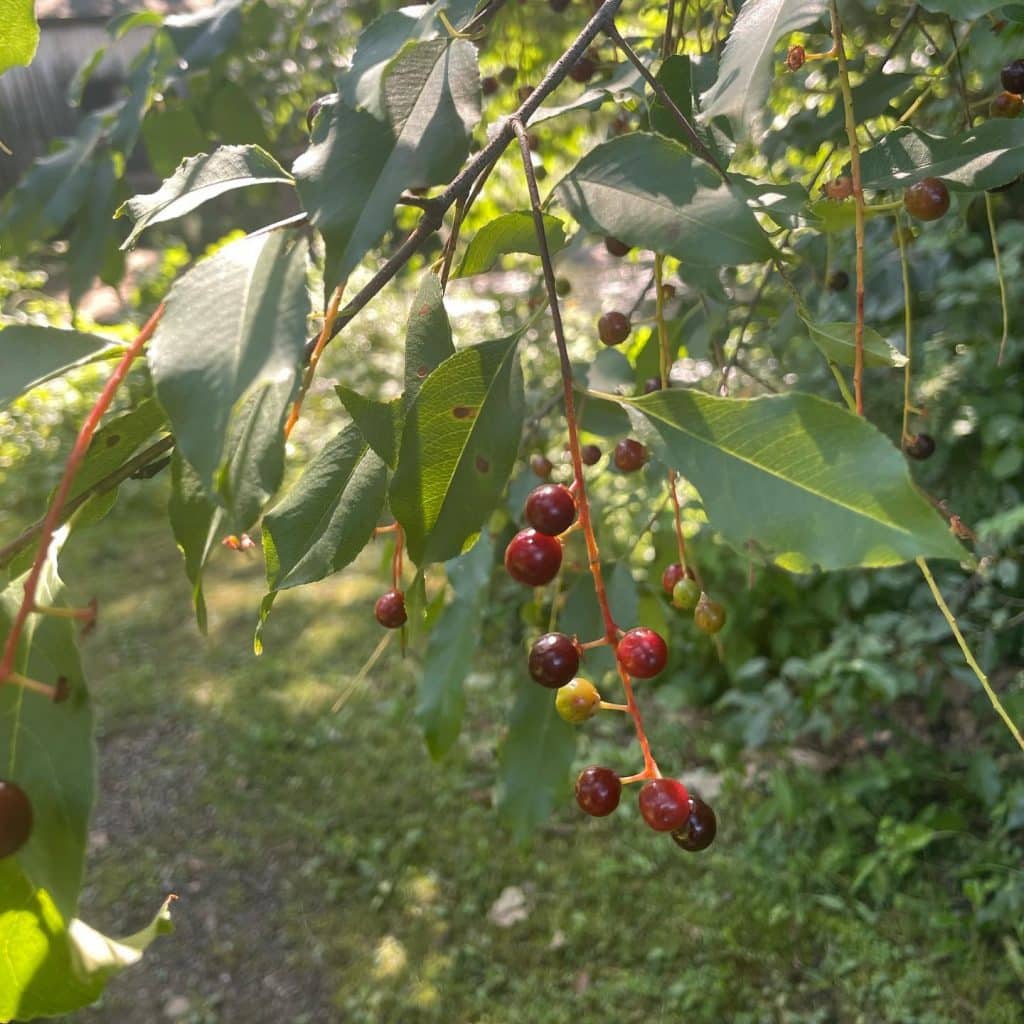
Wild Black Cherries (Prunus serotina) are a native plant that can be found in full sun. They grow up to 100 feet tall. Young Black cherry trees have light gray bark with horizontal lenticels. As the tree ages, the bark becomes ridged or pleated. The ovate leaves are alternate and have small teeth. Snapping a […]
Pleurotus ostreatus – Winter Oysters
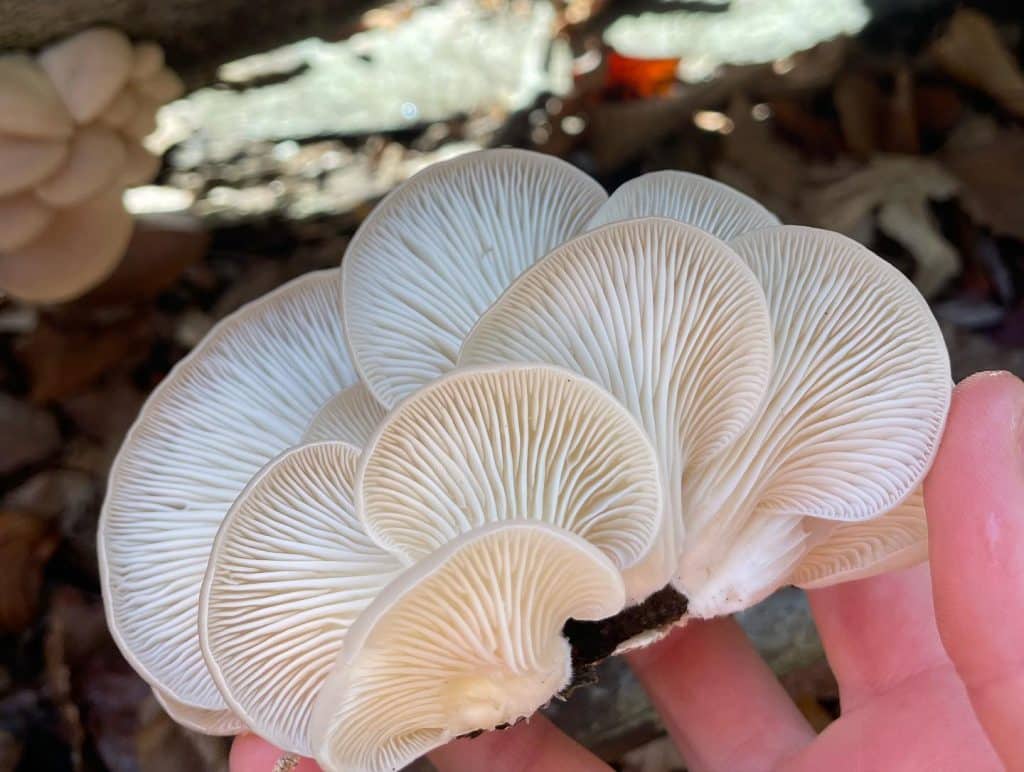
The Winter oyster mushroom (Pleurotus ostreatus) is the most commonly cultivated mushroom, but is also commonly found in the wild. Winter oysters, or Pearl oysters, can be identified by their tan cap, stubby off-center stem, and decurrent gills. Winter oysters tend to have a darker cap and grow larger than the summer oyster species (Pleurotus […]
Hydnum spp. – Hedgehogs
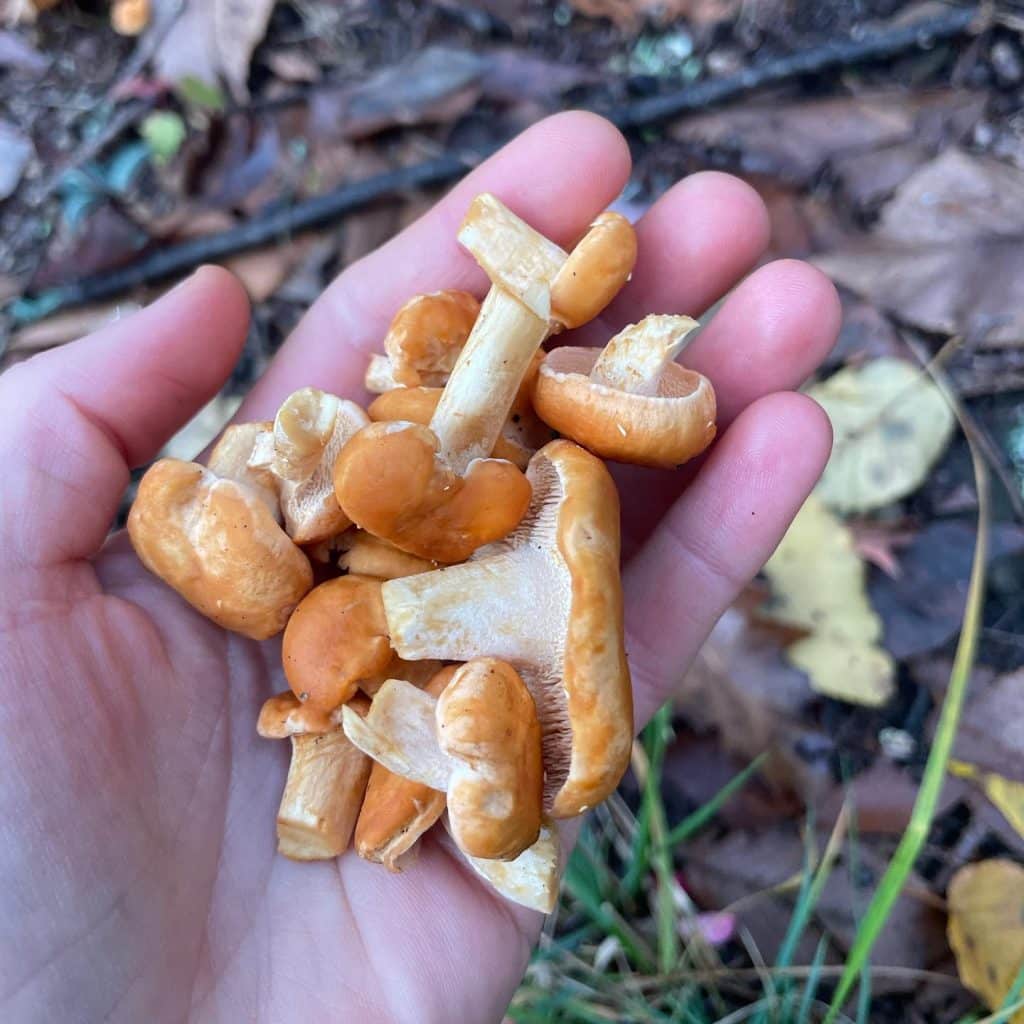
Hedgehogs (Hydnum spp.) are a group of 49 mushrooms in the Hydnum genus that are all considered edible. Hedgehogs can be found in New England from July-November. Hedgehogs are easily identified by their orange color and teeth under their cap. Hedgehogs can be found growing in groups in moss and leaf litter. They grow symbiotically […]
Ischnoderma resinosum – Resinous Polypore
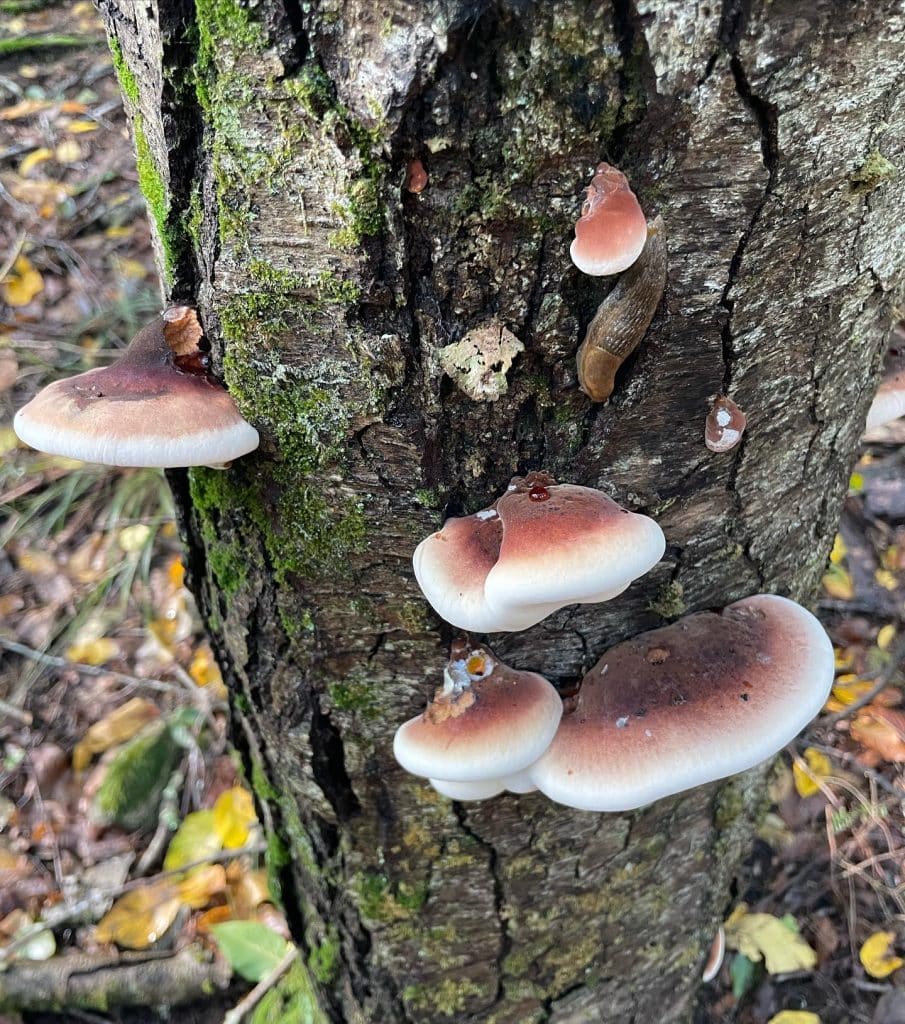
The Resinous polypore (Ischnoderma resinosum) is a saprobic fungus that can be found on fallen hardwoods from September until the first hard frost. The resinous polypore is thick and fleshy when young with a pale brown cap and thick white margins. The mushroom toughens and the cap becomes a darker brown with age. The cap […]
Entoloma abortivum – Shrimp of the Woods
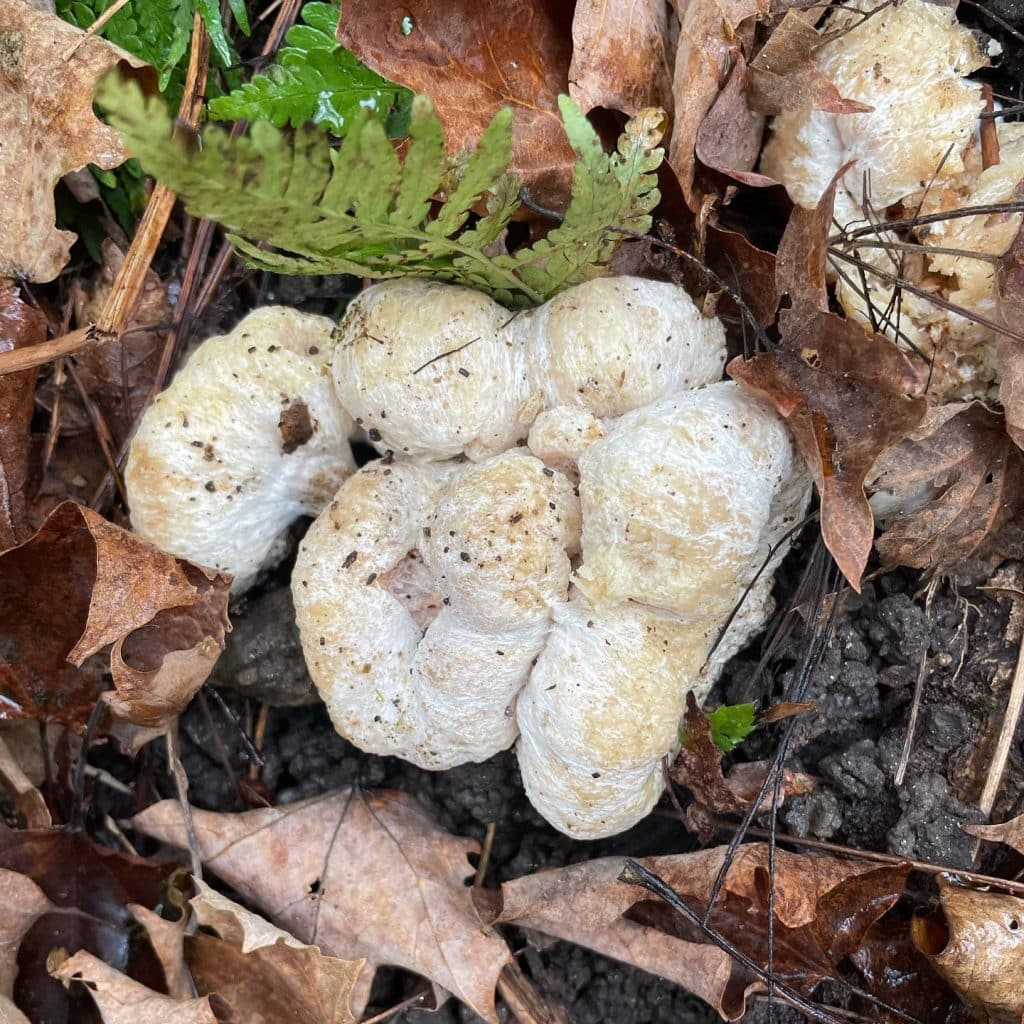
Shrimp of the Woods (Entoloma abortivum) is a unique looking mushroom that develops when an Entoloma fungus parasitizes a honey mushroom (Armillaria sp.). Shrimp of the woods can be found from September-November in decaying forest material. Shrimp of the woods have a folded, twisted, brain-like shape with a pink interior. They have no gills. The […]
Hypholoma lateritium – Brick Caps
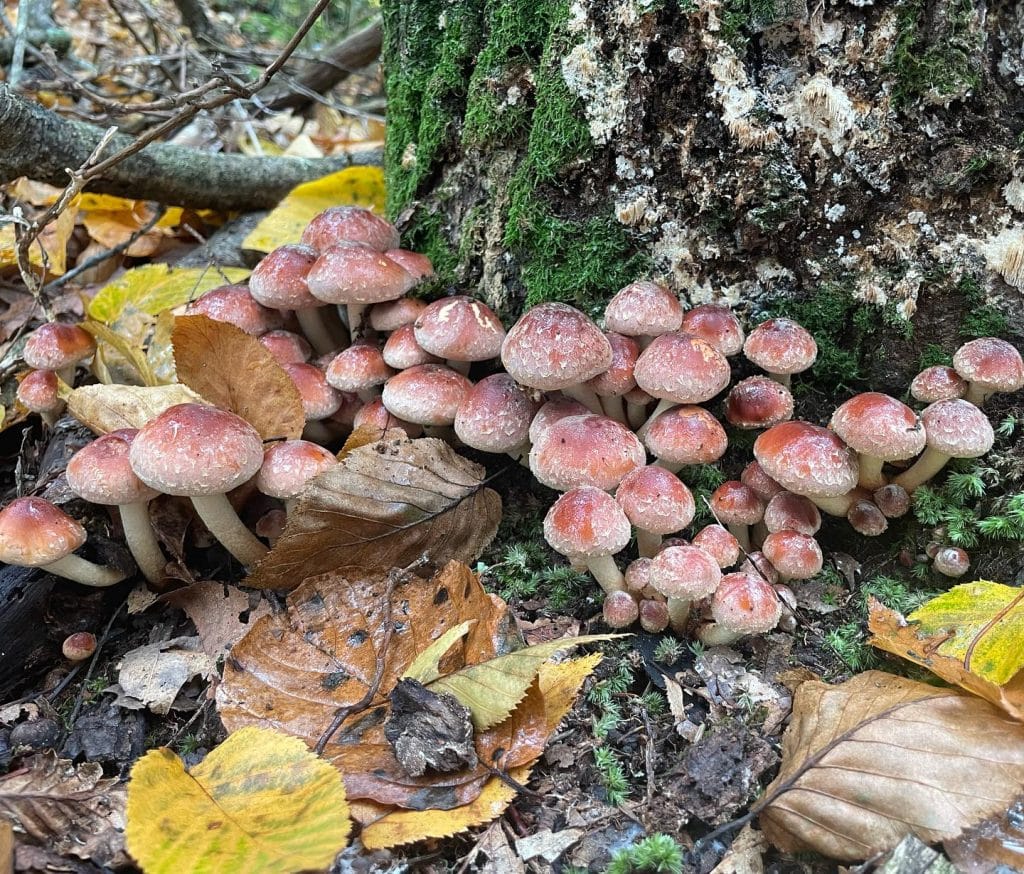
Brick Caps (Hypholoma lateritium) are edible mushrooms that can be found on hardwood stumps and deadwood from August-November. They can be found throughout the United States but are most common in the Northeast. Brick caps grow in bouquet-like, dense, tight clusters. The cap has a brick red color in the center, fading to a lighter […]
Ganoderma applanatum – Artist’s Conk
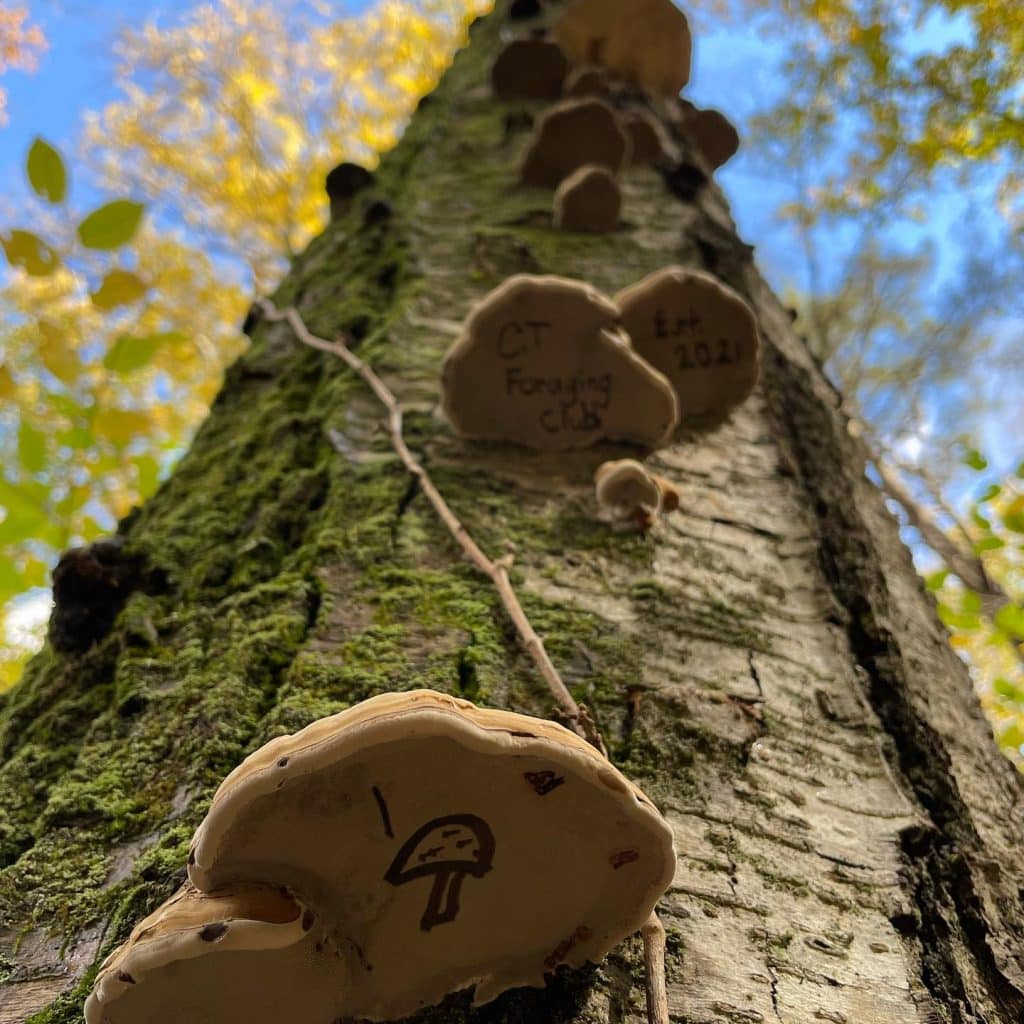
Artist’s Conk (Ganoderma applanatum) is a common mushroom that can be found worldwide. It can be found on living and dead trees, primarily hardwoods. Artist’s conk is both a parasitic and saprobic fungus. It is particularly known to decompose beech and poplar trees. Artist’s conks are perennial mushrooms that can grow up to 2 feet […]
Fomes fomentarius – Hoof Fungus
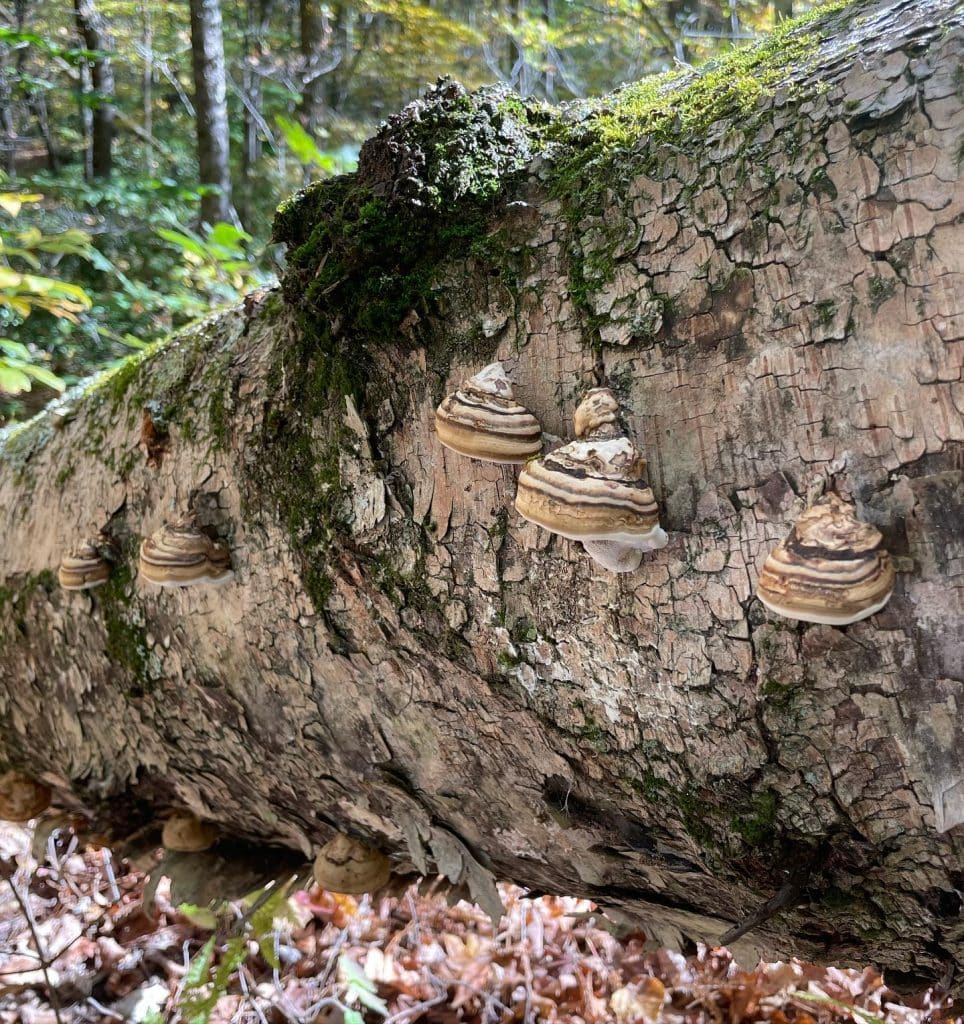
Hoof fungus (Fomes fomentarius) is one of the two mushrooms that was found with Otzi the iceman who lived 5,000 years ago in the Italian alps. Hoof fungus, also known as Tinder fungus, can be found growing on living and dead birch, beech, and sycamore trees. It is a perennial fungus, first emerging in the […]
Clitocybe nuda – Wood Blewits
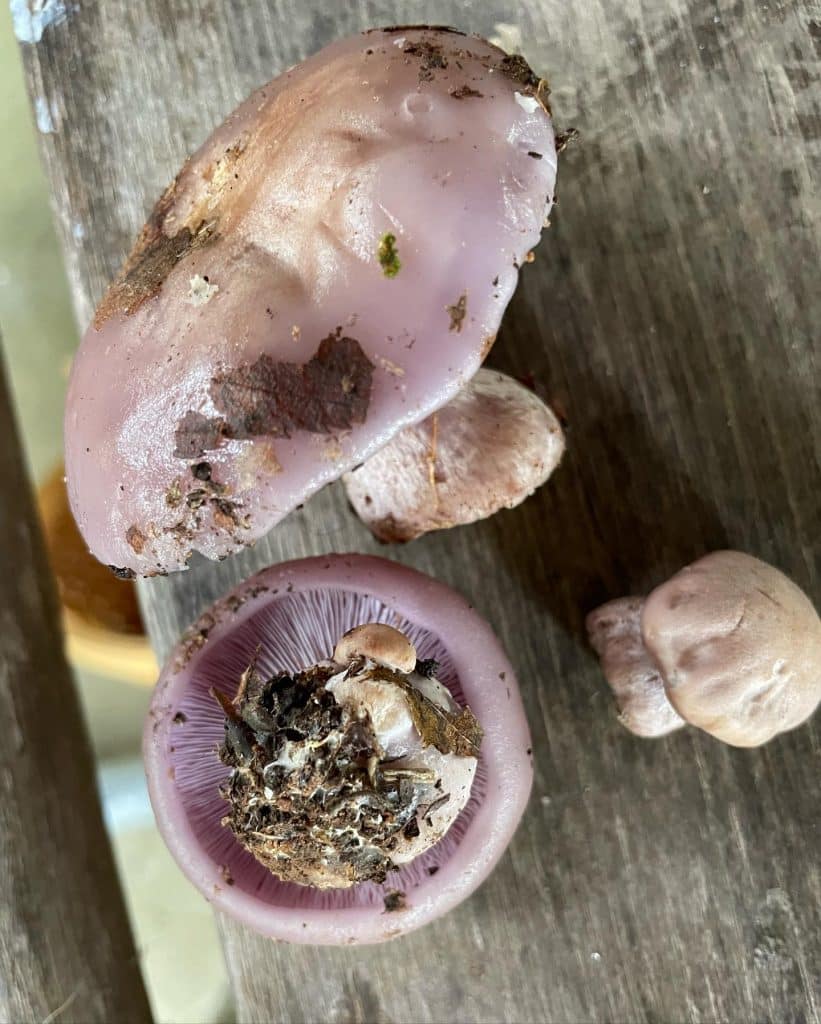
Wood Blewits (Clitocybe nuda) are edible mushrooms that can be found in compost heaps, wood chips, and leaf litter after heavy rains. The mushrooms can fruit multiple times per season from fall to early winter. Wood Blewits have suede-like caps that are purple when the mushroom is young, turning tan then white as it ages. […]
Pleurotus pulmonarius – Italian Oyster Mushrooms
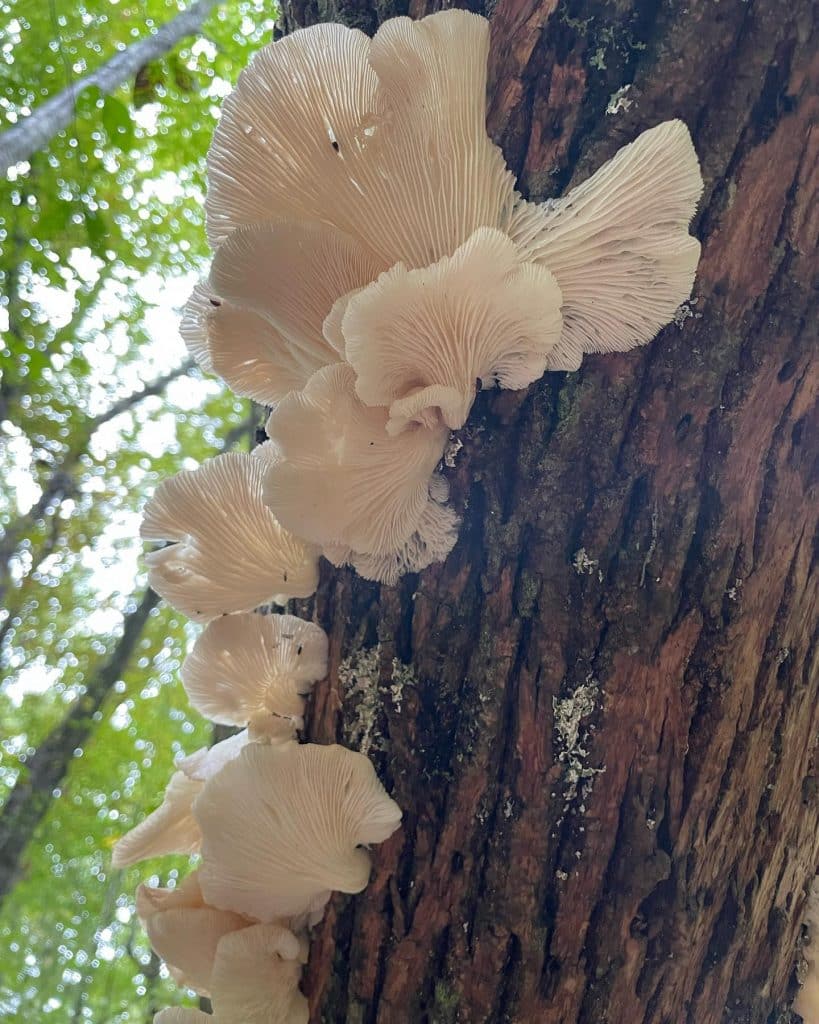
Italian oyster mushrooms (Pleurotus pulmonarius) are edible oyster mushrooms that grow in New England from summer-fall. These mushrooms tend to be smaller and whiter than the Pearl Oyster mushroom (Pleurotus ostreatus) which prefers cooler weather. Oyster mushrooms are among the most cultivated and consumed edible mushrooms in the world. Oyster mushrooms are identified by their […]
Hypomyces lactifluorum – Lobster Mushrooms
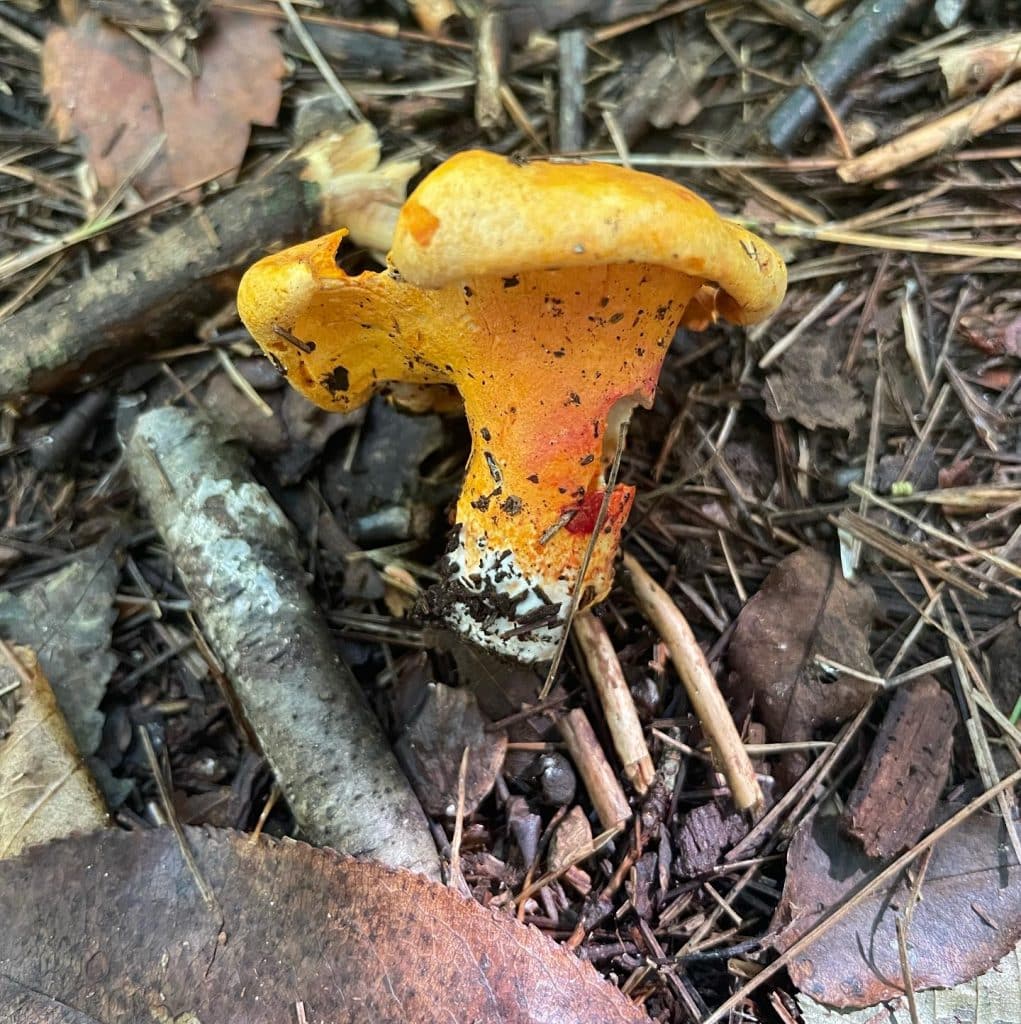
Lobster mushrooms (Hypomyces lactifluorum) are a parasitic mold that takes over a Russula or Lactarius mushroom, turning the mushroom red and improving the texture and taste. The mold most commonly infects Russula brevipes and Lactarius piperatus mushrooms. Lobster mushrooms grow in the ground, near hardwoods or hemlocks. They can be found July-October. Lobster mushrooms can […]
Grifola frondosa – Maitake
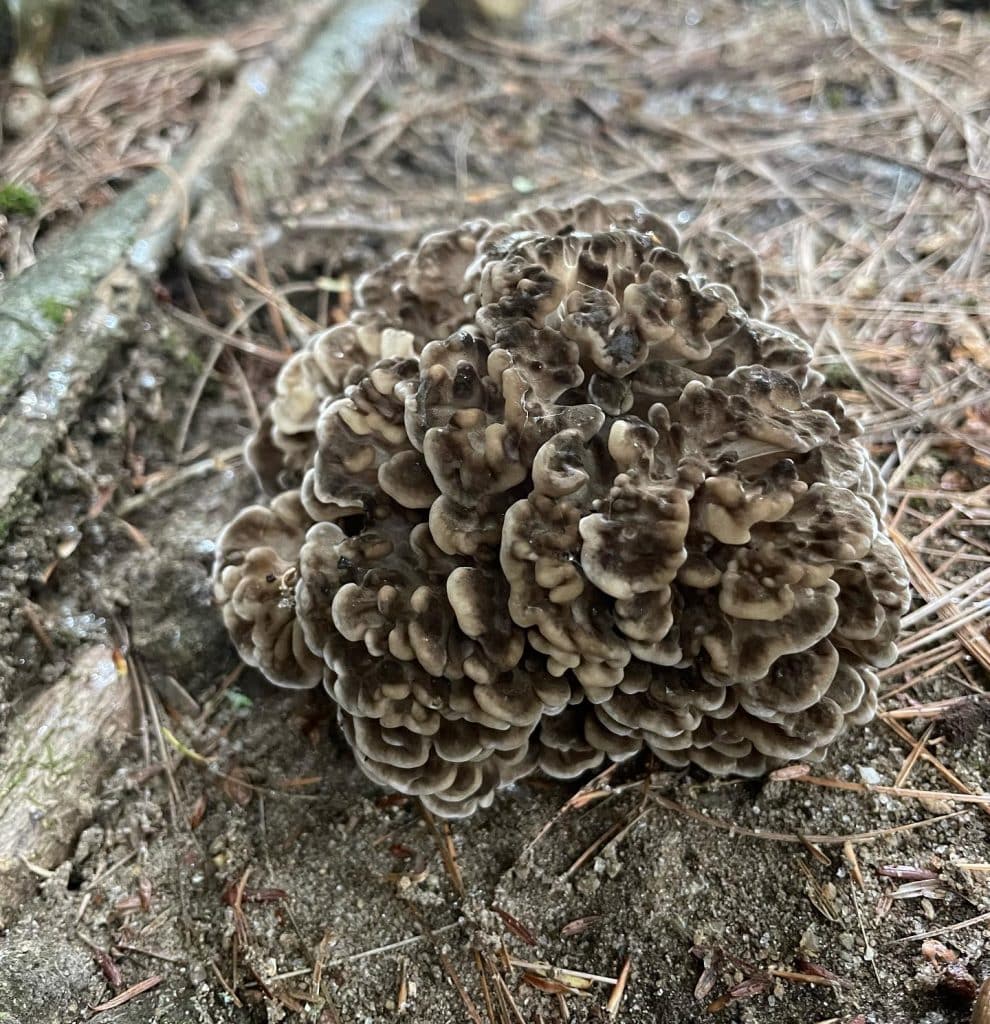
Maitake (Grifola frondosa) are choice edible and medicinal mushrooms that grow at the base of hardwood trees. 98% of the time they are growing at the base of oak trees. Maitake, also known as Hen of the Woods, can be found fruiting from late August to early November. They have gray or brownish caps and […]
Hericium coralloides – Coral Tooth Fungus
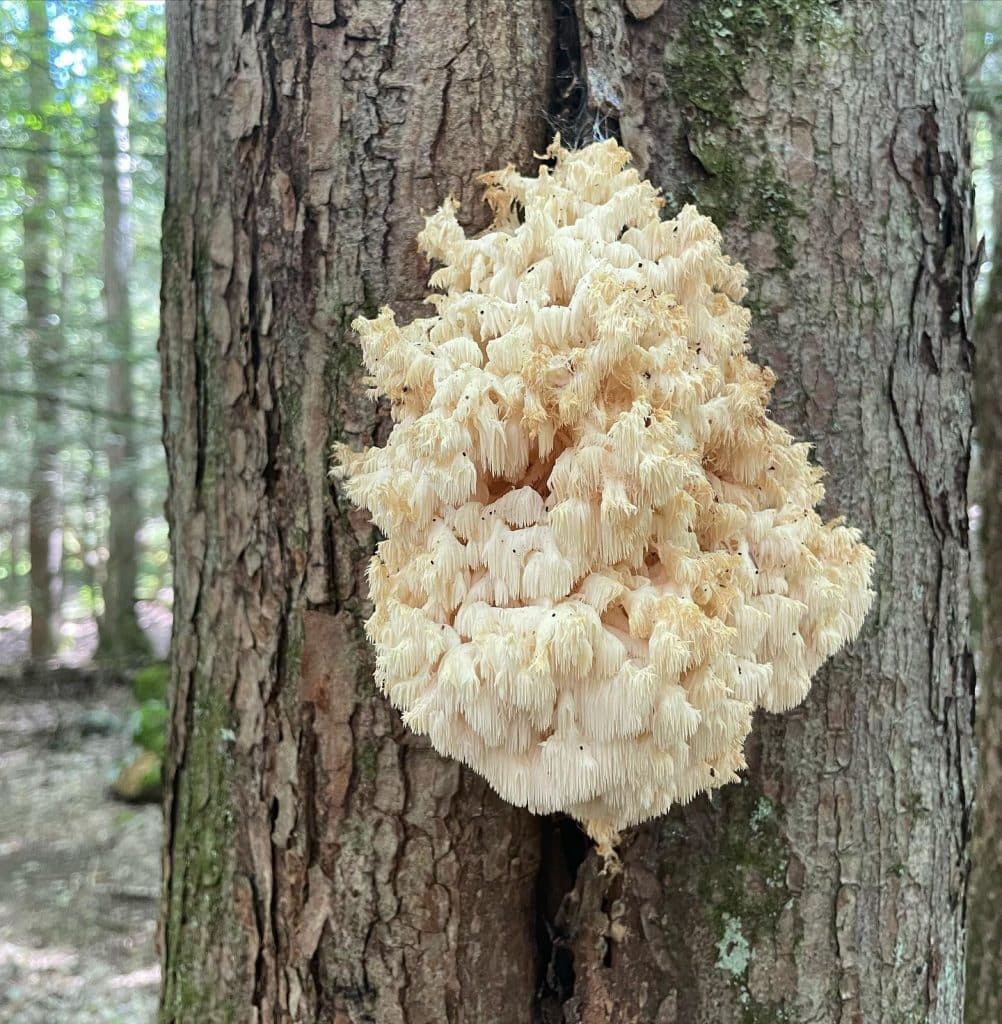
Coral Tooth Fungus (Hericium coralloides) is an edible mushroom that fruits late August to October. It can be found throughout North America and Europe, as well as in India, Russia, China, and Japan. Coral tooth fungus can be found growing on dead or decaying hardwoods, especially oak and beech. It is saprobic and possibly somewhat […]
Hohenbuehelia petaloides – Shoehorn Oyster
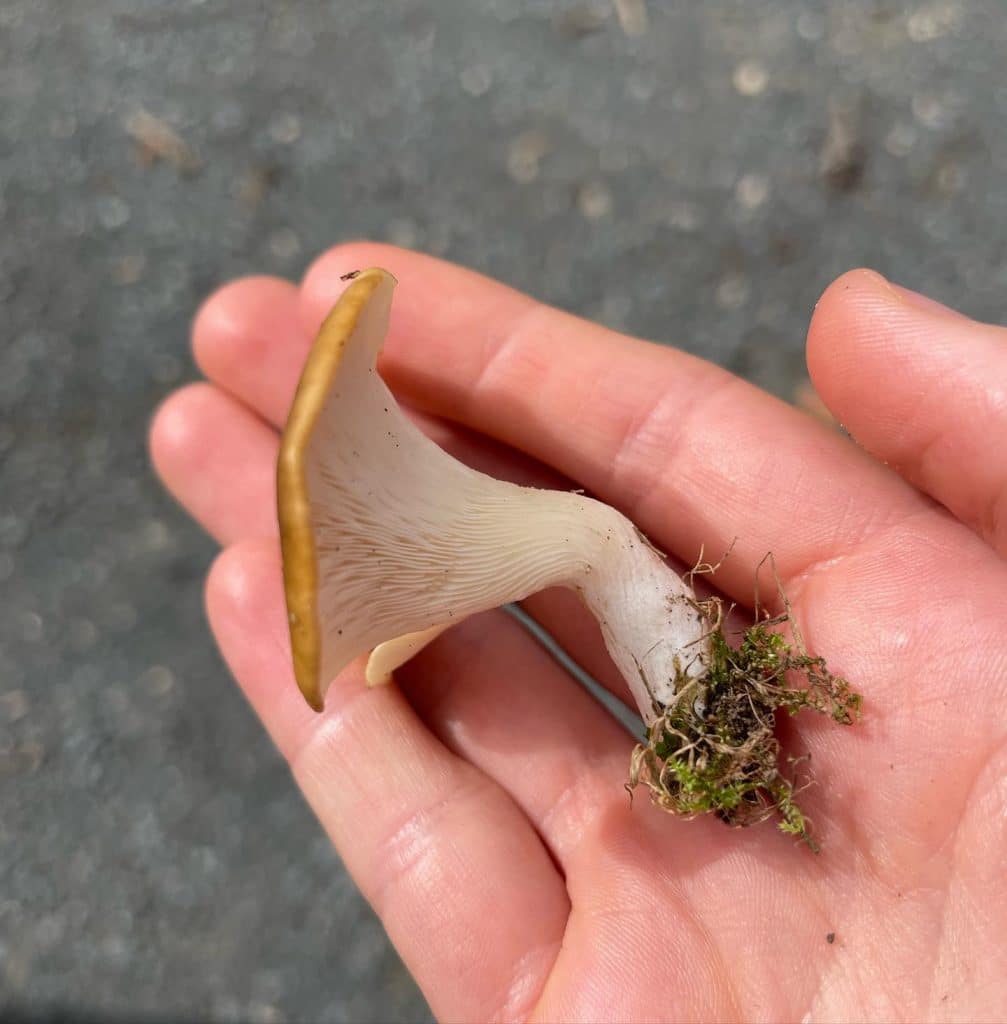
The Shoehorn oyster (Hohenbuehelia petaloides) is an oyster mushroom look-alike that can be found in New England summer-fall. Unlike true oyster mushrooms, the shoehorn oyster usually grows on wood chips or wood-rich soil. It can be found growing in clusters in urban settings or growing alone or in small groups in woodland settings. The shoehorn […]
